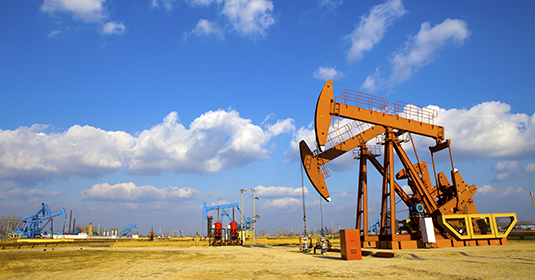The pumping unit is an industry unto itself, one that has ridden the ups and downs, ins and outs of the broader oil industry and come through not just intact, but thriving.
By Hanaba Munn Welch
Some wells flow; some don’t. Those that do, sooner or later, won’t.
A range of strategies and devices work to lift oil to the surface. None is more steadfast than the rod-driven downhole pump. Its basic technology hasn’t changed appreciably over decades, as bobbing pump jacks everywhere attest.
As horizontal exploitation has increased in the Permian Basin and elsewhere, pump jacks and their ilk aren’t always on the scene initially, but they wait in the wings.
Greg Wilkes, petroleum engineer, manager of Permian Basin operations for Broad Oak Energy II in Midland, spoke at the Permian Artificial Lift and Production Optimization Congress in Houston in March. Before the conference, he shared some of his observations with PBOG, addressing the role of pump jacks in the current scheme of things, particularly in the Permian.
“We’re all in a learning process still every day, trying to figure out what’s best,” Wilkes said. “For the initial production in these horizontal wells, we make a tremendous amount of fluid. The pump jack is good for late in the life and up to 300 to 400 barrels a day. Higher than that, other forms of lift are more efficient. A lot of people are using gas lift on their horizontal wells initially.”
Horizontal drilling is fostering change. “Not major new developments,” Wilkes said. “We are adapting some of our existing technology to work in the horizontal well bores.”
Deviated holes have always presented challenges; horizontal drilling adds more. “You have to deal with some different issues when you’re working with the horizontal,” Wilkes said. “That’s the challenge we’re going to face.”
Wilkes doesn’t foresee the demise of rod-driven pumps, despite the greater propensity for tubing wear in horizontal wells. “We will always circle back to putting stuff on rod pumps,” he said.
Rod pumps work well because they create the lowest amount of backpressure, Wilkes said. “The lowest amount of pressure you can have in that well bore, the more oil you make,” he said. “Whether we drive them with the traditional pumping unit—pump jacks—or the belt units.”
If there’s a change on the oil field horizon, it could be a move from traditional pump jacks to tall belt-driven units that move only vertically. “We might move to more of those,” Wilkes said. “They’re really tall. They have a long extended stroke. You can run them slow. That means there’s less cycles because you’re pulling it slower. The wear on your equipment is less.”
Already, the units are standing tall in the Permian, but another cousin is making inroads in urban settings, driving the same polished rod above ground and sucker rods below to work the downhole pump but in a less noticeable way. It’s the linear rod pump, called an LRP by the manufacturer Unico.
“Everything is the same that goes downhole,” said Jordan Hanson, a Unico sales and service representative in Durango, Colo. “The difference is we actually mount our pumping unit directly to the wellhead. It takes up less real estate; it’s easier to install. When everything is all put together, you can’t see any moving parts on it.”
Relatively small and quiet, the LRP works well in urban settings and other locales where noise and visibility of equipment is a primary concern.
Fort Worth is a city where the LRP has made a debut, but some units are in place in more remote settings—the Durango area, for one. “They want to see their mountains,” Hanson said. “The less obstruction, the better.”
The LRP incorporates a rack-and-pinion design. The power is an electric motor. “They’re all controlled by a variable-speed drive that is manufactured in the United States by Unico,” Hanson said.
A feature of the LRP is software that monitors the operation of the pump for optimal production. “We can actually determine how much liquid is inside the pump,” Hanson said. “We interrogate the motor to get all that information.”
Hanson, a native of Wisconsin, started his professional career as an unlikely candidate for the oilfield. “I didn’t even know what oil and gas was when I grew up,” he said. “Working through Unico is how I got exposed to oil and gas. Unico has brought oil and gas industry and technology to Wisconsin.”
Oil and gas is treating him well. “The LRP is my bread and butter,” he said.
For Wilkes, the path to the oil patch was natural. “My dad was a production foreman working out here [Midland],” he said.
Wilkes graduated from Texas Tech in 1986 with a degree in petroleum engineering. “I got out at kind of a rough time,” he said. “I look back on it, and really it was a blessing. I went to work for a small company. I worked as a pumper. I had a route where all of my pumping units were on gas engines.”
Wilkes doesn’t discount the possibility that history could repeat itself. “There’s a capacity issue on the existing electrical infrastructure,” he said. “We have these big transmission lines. We can’t just hook up to them. They have to build substations. One of those substations costs several million dollars—tens of millions. With all of the additional drilling, all the well bores we’re putting on, we’re taxing the existing infrastructure. They’re scrambling to keep up with demand.”
As long as wells are on gas lift, electricity isn’t required. But when wells require pumping units, a lack of electrical power changes the equation.
“We are going to be looking at either generating our electricity or running pumping units on gas engines,” Wilkes said. “It may come back around.”
Freelance writer Hanaba Munn Welch grew up on a farm in North Texas to the year-round squeaking of pump jacks and the seasonal sounds of the cotton gin. Her interests are varied. See www.hanaba.net.











